BadwaterJournal.com
WHAT UNSUSTAINABLE URBAN GROWTH LOOKS LIKE
Published online at Louisville, Kentucky USA -
An independent, secular, contemporary journal of political and environmental issues dedicated to peaceful reduction of human impacts on Earth


poverty is the raw resource,
crime is the extractable product and corrections is the value added process
Poverty as a necessity for expanding Metro Government budget
More than one sixth of the Metro population or about 105 thousand people earned income below the federal poverty level. About 35,000 males are arrested in Louisville each year and booked in Metro Corrections for a variety of crimes. Poverty is a fertile soil for crime and crime is the raw product of the justice system.
Criminal defense attorneys find that most defendants are unemployed or low income and crime is an alternative income producing activity. Thieves who steal copper and sell to scrap metal dealers, street corner crack dealers, bad check writers and shop lifters are often without resources when arrested and are given a public defender to represent them.
See the website <http://dpa.ky.gov/>
In FY 2010, Kentucky’s criminal justice agencies enacted budgets totaling $909,837,220.00.
Approximately 33% of the Justice and Public Safety Cabinet’s annual budget goes towards the operation of adult correctional institutions,
20.4% funds Kentucky State Police activities, and 16.9% funds community services and local facilities.
Some $ 300 million is spent housing arrestees and convicted persons every year.
Incarceration costs on average $ 35 per day per arrestee. Thats $ 12,775 each per year. Providing public defenders to the indigent costs the state about $ 40 million dollars each year
DPA reports the criminal justice system takes 5.2% of the total state budget. Caseloads have risen 10% in the last four years with 170,000 cases handled in 2012. 33,659 cases were handled by Jefferson County PDs. 57 PDs handled on average 589 cases each or about 50 cases per month. The distribution falls unevenly on some PDs who handle many more District Court cases.
The Kentucky Justice and Public Safety Cabinet has 8,000 employees.
The billion dollars spent arresting and locking up people results in ruined personal records that render them unemployable and knock them further down the economic ladder. For many its the continuation of a futile struggle handed down from parents.
Widespread poverty persists in a system where multi-billionaires enjoy lifestyles that would shame the Pharaoh. Crime spawned of poverty causes political leaders to build military forces of police legions that draw on the public purse to provide the value added product of 'safety'. Kentucky funds millions of dollars annually to deploy an enforcement system that makes 125 thousand arrests per year. Each arrest and processing costs the public about $7200 if divided into the total $ 900 million budget.
Poverty and its resultant desperate crime, gang formation, and disproportionate race impacts are beneficial creations from the perspective of feeding raw product to corrections and providing justice enforcement jobs.
With increasing poverty in Kentucky a 6.27 % increase in theft and 9.05% increase in burglary has occurred.
The criminal raw product increases as poverty increases -a large impoverished community is an asset to expanding enforcement and corrections programs. And indeed all the agencies are seeking more funds to handle the increasing work load. Mayor Greg Fisher wants to hire 25 more full time officers in 2014-2015.
Entrenched enforcement and corrections unions are powerful political forces that elect politicians and heavily influence public policy--like all agency corporate entities they tend to seek to grow their budgets.
The de-criminalization of marijuana in Kentucky-- a step that a growing number of other states have taken--would deprive these same agencies of thousands of arrestees to process each year. Thousands of pot smokers are arrested each year, and no progressive political force has the clout to cause the state of Kentucky to abandon its vampire like parasitism on the poor.
Metro government announced programs to reduce community violence run counter to these basic economic interests and are therefore due close scrutiny as unlikely to address poverty.
In fact, the Mayors community violence reduction program looks likely to once again focus on personal choices made by individuals caught up in poverty, bad family circumstances and the history of inequitable racist oppression
In our system a hungry man or a poor one is condemned to either endure his station or become a raw product to be processed.
And now there are so many more poor men and women.
The wealth of the community could be rededicated in a focused way to provide resources in jobs and training to rebuild community prosperity by strategic economic investment in impoverished areas
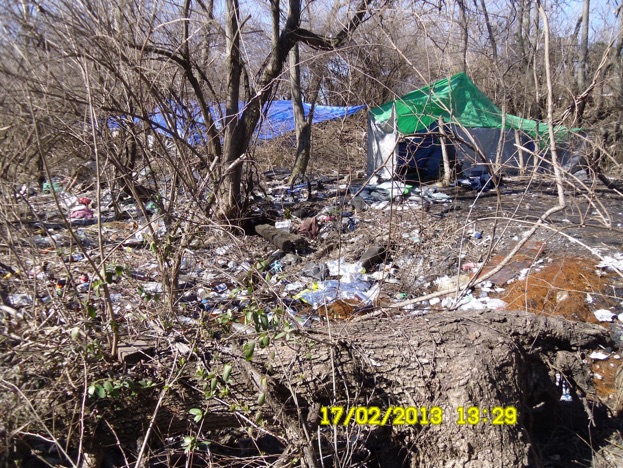
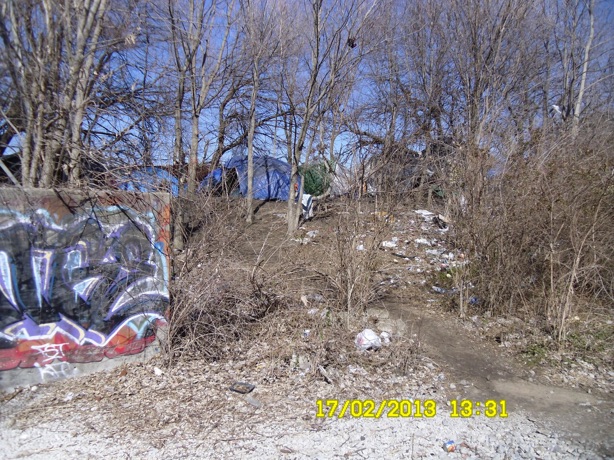
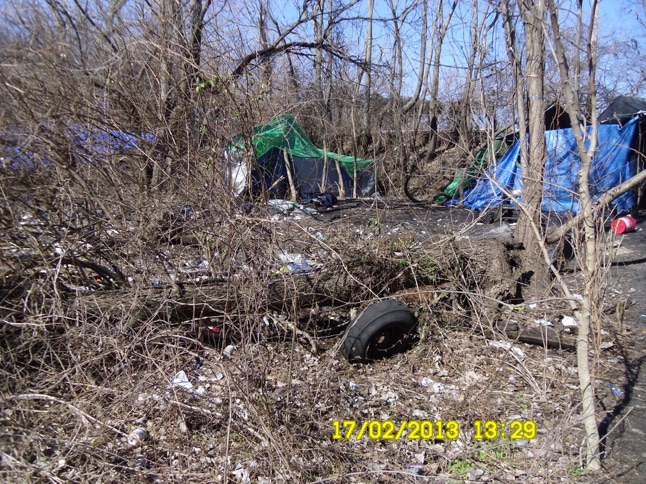
‘Hoovervilles’ in Louisville 2013

2007 - 2010 economic crime
2007 2010 increase
Burglaries 26,748 29,170 9.05 %
Larceny 69,805 74,185 6.27%
Theft
Source: Kentucky State Police, Crime in Kentucky, and United States Census Bureau
The adult arrest rate for all Part One offenses increased 36.46% between 2009 and 2010, and 15.27% during the four year period from 2007-2010.
Between 2009 and 2010, the adult arrest rate for murder, larceny-theft, motor vehicle theft, rape, robbery, and burglary increased while the arrest rate for aggravated assault and arson decreased.
In 2010, 78.9% of arrestees were white, 20.8% were African-American, less than 0.2% were Asian/Pacific Islander, and less than 0.1% were American Indian.
In 2010, 34.7% of arrestees were women. The offense with the largest percentage of women arrested was larceny-theft (61.6%).
$ 300 million annual budget for Kentucky prisons
$ 909 million annual budget total enforcement




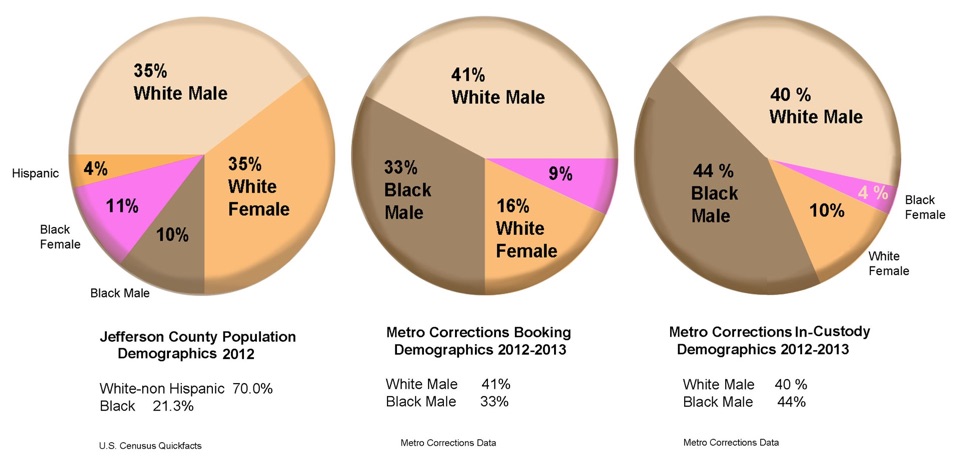
One result of this analysis is to consider transitioning police and corrections to provide de-militarized programs directly addressing human needs
LMPD might gain revenues outside the Metro budget by building profitable enterprises in the ghetto worked by those who would otherwise be processed without being provided training and without accruing any wealth after long prison stays. Instead of sending local convicts away for decades from family and community --we should reinvest their labor here in job programs either while in confinement or day reporting as appropriate.
Give police jobs overseeing profitable enterprises with the goal of building wealth among the impoverished and recycling it into the local community.
The longterm reduction of the epidemic of murder requires more than programs focused on correcting the tendency for poor individual choices.
One desperate need is a WPA style project to build housing and amenities for the homeless. Some of the $ 170 million of LMPD’s police militarization budget could be applied to building homeless encampment showers and providing health needs. This would reduce the risk of epidemic disease and open a door to social recovery of the jobless and homeless.
These pictures show a sprawling homeless encampment littered with waste and unsafe sanitary conditions and populated in all weathers by homeless men. This site is one of many others that have increased since just last year. Those left behind in the capitalist race do not evaporate and their needs reappear on the social ledger somewhere. Since we pay for them one way or another--how about helping them to reduce the cost to ourselves?
During 2005,
there were 13,070 total arrests for violent crime-related offenses. Of that number, 10,614 (81.2%) involved adults and 2,456 (18.8%) involved juveniles. In District, Circuit, and Juvenile Court, a total of 21,669 violent crime charges were processed. Of those, 17,511 or 80.7% reached a final disposition. There were 5,478 (31.3%) convictions, 71 (0.4%) acquittals, and 11,046 (63.1%) dismissals. There were 916 (5.2%) informal judgments.
Furthermore, according to local law enforcement there were 60 homicides in Louisville and Jefferson County in 2005.
The results reveal 11,336 total arrests for drug-related offenses in 2005. Of that number, 10,647 (93.9%) involved adults and 689 (6.1%) involved juveniles. in District, Circuit, and Juvenile Court, a total of 22,853 drug charges were processed. Of those, 18,311 or 80.1% reached a final disposition. There were 7,428 (40.6%) convictions, 13 (0.1%) acquittals, and 10,590 (57.8%) dismissals.
There were 280 (1.5%) informal judgments.
In the 2004-2005 school year, there were 707 drug- and alcohol-related incidents in school or at school-sponsored events. Also, there were 66 arrests and 19 referrals for drug-related incidents on or near college campuses in 2004. College data for 2005 is not yet available.
In 2004, 56 deaths in Jefferson County involved drugs. There were 78 automobile accidents involving drivers under the influence of drugs, resulting in 9 fatalities. Complete data for 2005 is not yet available.
The total estimated street value of drugs seized or purchased by the Narcotics/Vice Unit in 2005 was nearly $57 million. During 2005, local police agencies and specialized prosecutors were directly responsible for the seizure and/orforfeiture of assets totaling a little more than $1 million. Included in that amount
was nearly $300,000 in forfeited assets.
STATE DATA CENTER POVERTY NUMBERS
Kentucky at 17.7 % ranks 44th out of 51 states for poverty beating Texas and Mississippi that have poverty rates of 18.4 and 22.7 % respectively. Between 2007 and 2010 Kentucky poverty increased a whopping 14%
2011 Metro population total . . . . . . . . . . . . . . . . . . 602,011
2010 Jefferson County total . . . . . . . . . . . . . . . . . . 741,096
2050 Jefferson County projection . . . . . . . . . . . . . . 904,790
2010 KIPDA Region population . . . . . . . . . . . . . . . 959,091
2050 KIPDA Region population projection . . . . . .1,300,202
2007-2011 below poverty income percentage . . . . 17.5%
2007-2011 below poverty Metro total . . . . . . . . . . . 105, 351
2011 Black population percentage Metro . . . . . . . . 22.9 %
2011 Black population total Metro . . . . . . . . . . . . . 137,860
More than 70% of below poverty households are female single parent with no male present.




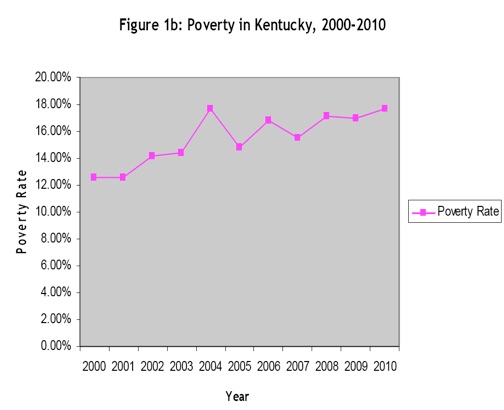
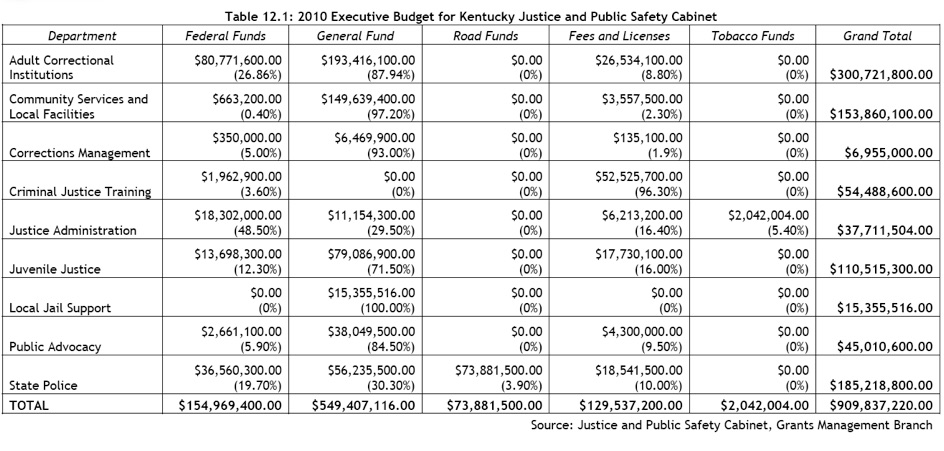
Read the Report on Violence Prevention - Louisville Metro ...
www.louisvilleky.gov/.../10-25-12-violence_prevention_report.htm
File Format: PDF/Adobe Acrobat - Quick View
Oct 25, 2012 – In early 2012, Louisville Metro Government
began a process to assess its capacity to address. Injury
and Violence Prevention in the community ...
URBAN LEAGUE REPORTS
<http://www.lul.org/StateofAfricanAmericanYouth.htm>
Related Pages:
Social Justice Pipeline HERE
Metro Racist History and current policy HERE
Losing the West End HERE
Social Justice HERE
For Whom the Bridge Tolls HERE
Every ten years the city wrings its hands over the segregated sad situation in the west end but makes no major structural program changes that would significantly re-invest and re-build the economy.

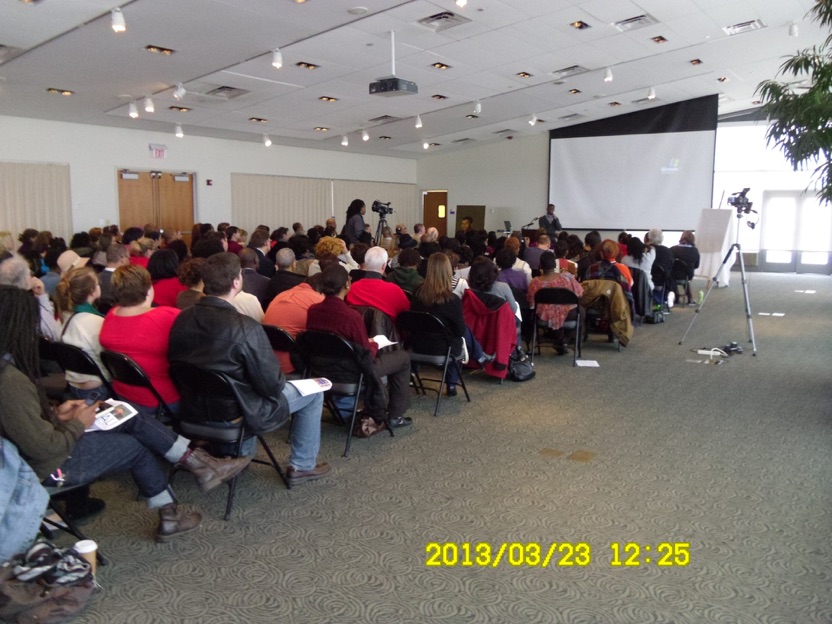
An additional $ 422 million of scarce city budget funds was appropriated for LMPD from 2002 to 2013 over the annual $ 100 million annual budget. At the end of this vast police expansion, the mayor decalred a crisis in west end violaence.
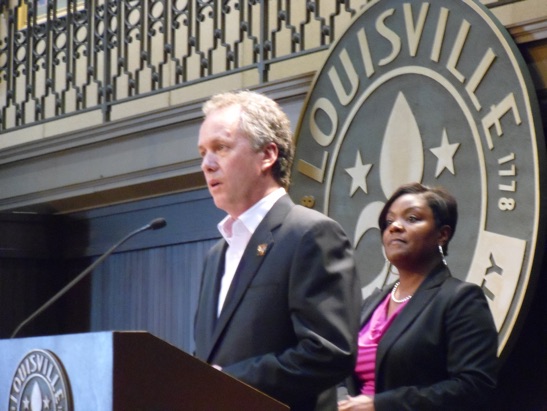
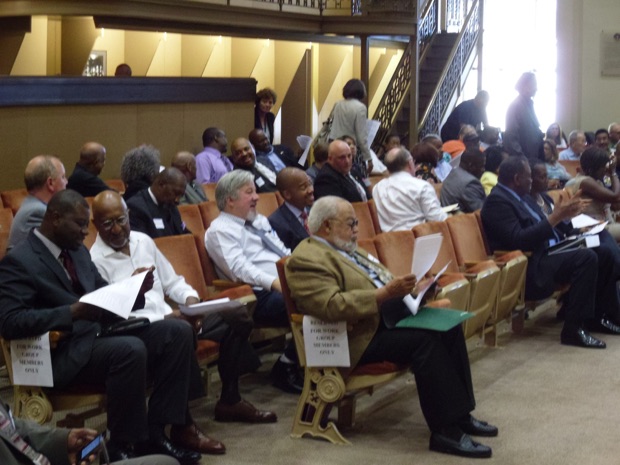
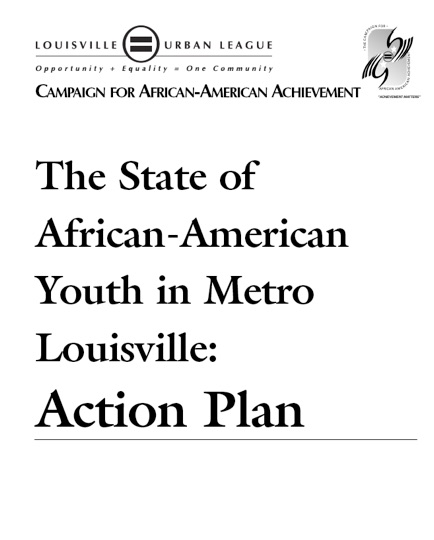
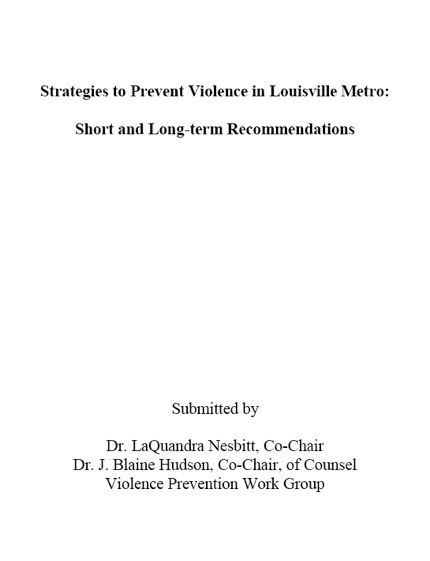
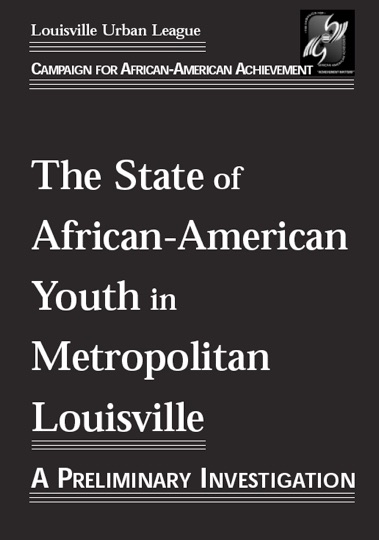
October 25, 2012 Violence Report
2001 Urban League study
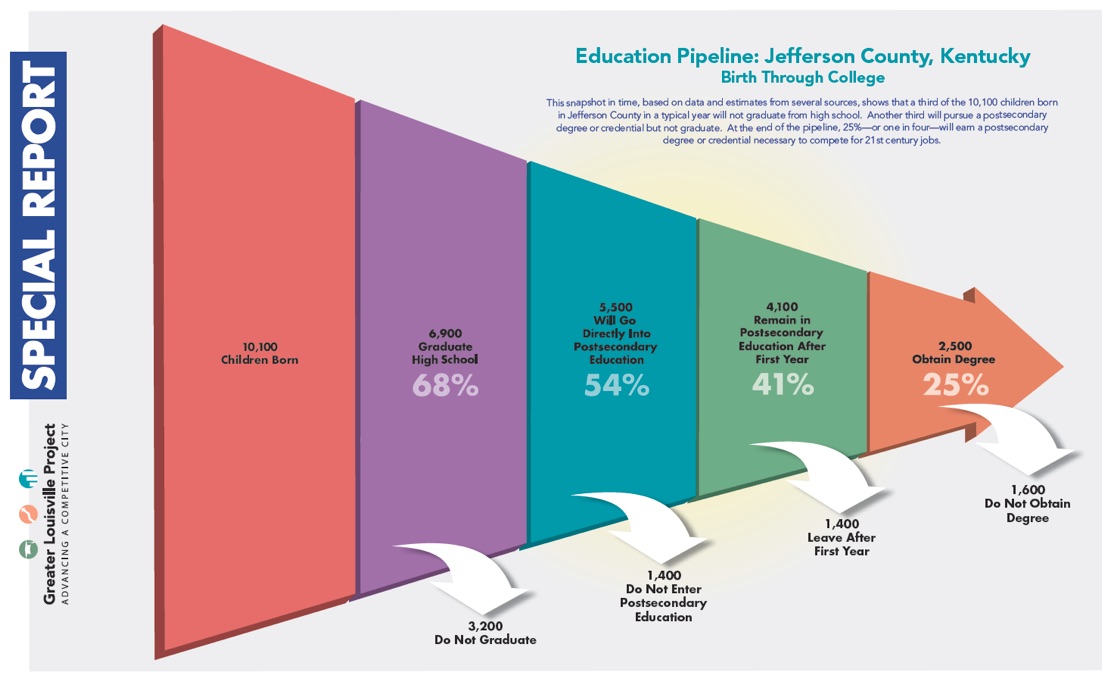
On May 17, 2012, three young African Americans were killed at 32nd and Greenwood Streets, in two separate incidents, with one occurring during the investigation of the other. In response to this shocking event, Mayor Greg Fischer proposed the formation of a work group that would accelerate the work initiated earlier that year and engage the community in the development of short and long term violence reduction strategies for Louisville Metro. Based on his extensive experience in leading community efforts and his vast knowledge as a historian, on May 24, 2012 Mayor Fischer asked Dr. J. Blaine Hudson, Dean of the College of Arts and Sciences at the University of Louisville, to chair the work group.
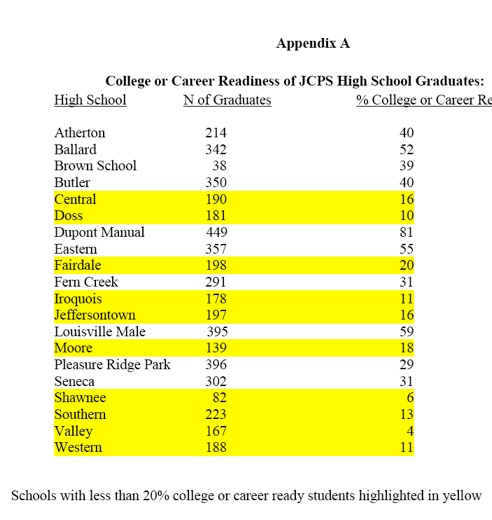

Education Report from the Mayor’s Violence Prevention Report
shows the low rate of college and career prepared students in the segregated neighborhoods
Black males make up just 10 % of the Metro Louisville population but, Metro Corrections annual statistics for 2012 show they make up 33 % of average daily arrestees and for various reasons they are retained in custody at a higher rate than whites. The Louisville leadership (more focused on cutting business deals in the east county region), seems to have a hard time connecting desperate poverty with resulting crime. After 145 years of racist discrimination since slave emancipation, Metro Louisville seems to be determined to add more police officers to increase
enforcement rather than adding investment to create jobs.
U of L police Lieutenant David James, a former Fraternal Order of Police leader and LMPD officer, now Councilman for District 6 is proposing to increase the number of police officers, even though
public safety now swallows up 55% of the total Metro
budget. David James should be demanding to know
the truth about the Jay Morgan case. Did insider deals
stop a FORD training center from being located in
West Louisville? Blue collar jobs and training is what
will bring peace in the streets.

Homeless people taking shelter under an interstate bridge in Downtown Louisville. They are gathered near a food kitchen a block away. High particulate counts of ultrafine automobile emissions particulates are found near roadways. This is a particularly poor makeshift shelter as the men will likely seek hospital care for respiratory distress if they spend much time here.
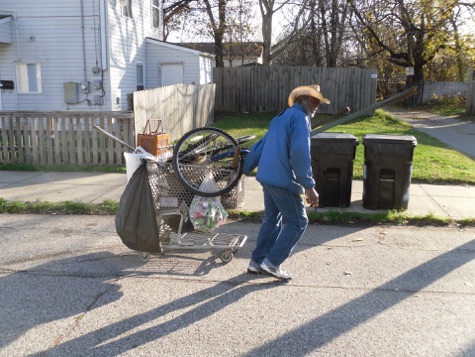
A number of metal recycling businesses pay cash for metal collected in the streets and alleys.
Residue of racist policy continues to produce Metro economic investment decisions that burden poor black people. See related articles:
